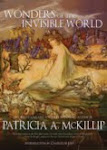
From the Back Cover:
“SCIENCE / NEW THOUGHT
Knowing or feeling that we are all connected to each other and to the cosmos by more than our eyes and ears is not a new notion but one as old as humanity. Traditional indigenous societies were fully aware of nonmaterial connections and incorporated them into their daily life. The modern world, however, continues to dismiss and even deny these intangible links--taking as real only that which is physically manifest or proved “scientifically.” Consequently our mainstream culture is spiritually impoverished, and the world we live in has become disenchanted.
In
The Akashic Experience, 20 leading authorities in fields such as psychiatry, physics, philosophy, anthropology, natural healing, near-death experience, and spirituality offer firsthand accounts of interactions with a cosmic memory field that can transmit information to people without having to go through the senses. Their experiences with the Akashic field are now validated and supported by evidence from cutting-edge sciences that shows there is a cosmic memory field that contains all information--past, present, and future. The increasing frequency and intensity of these Akashic experiences are an integral part of a large-scale spiritual resurgence and evolution of human consciousness that is under way today.”
Einstein’s theory of relativity had been seen by scientists and physicists as a four-dimensional space time reality, while refusing any other explanation or theory that there might be another kind of energy within the space-time. Today it is accepted that there is a concept of an underlying dimension within the universe. This medium carries information while manifesting things and processes within the universe. It is through this medium of the Akasha that humans are connected to one another, the world and the universe.
In today’s Western world, many people dismiss other ideas of reality and consciousness as being fantasy or creative imagination. Modern people are conditioned in believing only what they can see or can be proven scientifically, not what they are capable of perceiving through an altered state of consciousness. Many who see through this altered state do so through an Akashic experience. Anyone is able to tap into this altered state or consciousness, not just psychics.
The Akasha contains records of the wisdom of the ages, a type of collective knowledge encoded in a non-physical plane of existence. These records contain all of the knowledge of human experience and the history of the cosmos. There are philosophists, psychics, mystics and Reiki practitioners who are aware of the Akashic records and are able to read them in certain states of consciousness. The late American mystic Edgar Cayce was successful in reading the Akashic Records which he described as a type of library of a collective consciousness. This Akashic library contains every thought, word and action in the universe to which every life form contributes. For Christians the Akashic Records are known as the Book of Life as described in the Bible.
Akasha is the Sanskrit word meaning ‘sky, space or ether’, the term Akashic Records comes from Hinduism and is incorporated into theosophy as a meaning of a collection of mystical knowledge. According to the Hindu seers a cosmic source known as Akasha is the first of five elements while containing the memory of everything that has occurred in time and space.
Twenty people from respected fields provide their personal experiences with the Akashic to lend credence to this phenomena. Contributors are C.J. Martes, Swami Kriyanada, David Loye, Stanley Krippner, Jude Currivan, Guido Ferrari, Christopher Bache, Maria Sági, William Gladstone, Oliver Markley, Raffi Cavoukian, Alex Grey, Eric Pearl, Masami Saionji, Marilyn Mandala Schlitz, Pim van Lommel, Stanislav Grof, Fr. François Brune, Edgar Mitchell and Larry Dossey. Each of the experiences provides details on how they influenced and changed the life of the person.
Laszlo describes how the human brain has the ability to receive and exchange information from quantum-hologram fields. It is perceived that the human brain receives information from waves in the universe to which it is entitled. The brain does not receive everything but only that information for which it is encoded. Experiments have been conducted to show that several people are able to communicate through the Akashic field at the same time resulting in “shared dreams, common hunches and related insights”.
Remote healing has been analyzed after hundreds of cases and proven beyond a reasonable doubt by Maria Sági in Budapest. Another form of remote healing is used by Reiki practitioners where they send “healing energy” over a distance to their patients. Other varieties of the Akashic experience are near death experiences where the brain is temporarily not operating, out-of-body where the brain is obtaining information from outside the body, and after death communications where the brain is permanently not working yet is capable of receiving as well as sending information.
I recommend this book as invaluable to anyone who explores the areas of metaphysics and spiritual healing, as it has examples of “soul retrieval” during past-life regression, remote viewing, near death and out-of-body experiences, premonitions, communication with the dead and others; resulting in a new awareness of the cosmos.
ERVIN LASZLO, a leading systems theorist who was twice nominated for the Nobel Peace Prize, is editor of the international periodical World Futures: The Journal of General Evolution and chancellor-designate of the newly formed GlobalShift University. He is the founder and president of the international think tanks the Club of Budapest and the General Evolution Research Group and the author of 83 books, translated into 23 languages. He lives in Italy.
Book format: paperback, 280 pages
Publisher:
Inner Traditions Author: Ervin Laszlo
Available at:
Chapters.Indigo.caAmazon.com Amazon.co.uk




























































